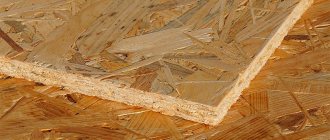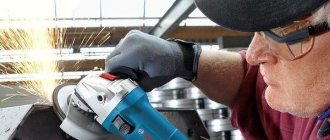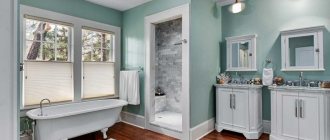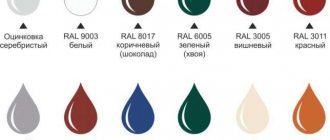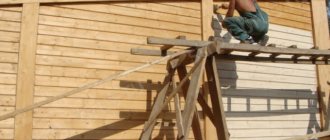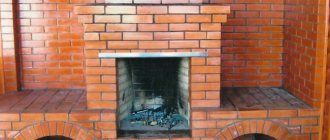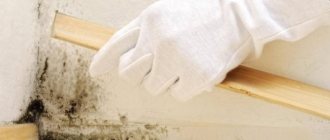The development of modern technologies makes it possible to purchase practical and multifunctional devices that speed up the production process and facilitate the work of the master during painting and preparatory activities. However, not all paint sprayers work well with complex and viscous paints.
You need to look for a special tool, because by purchasing an electric spray gun for viscous paint, the consumer receives a full-fledged technique for painting almost any surface for various purposes, and also saves on the consumption of paintwork materials, which is explained by the design features of this product.
Choosing a compressor
Having a compressor in your garage is generally very useful. It is used not only for painting work, you can connect pneumatic jacks, a pneumatic impact wrench to it, with a compressor you can blow out clogged fuel lines, check connections for leaks, you can simply pump up wheels with it and use it for many purposes and not only as a car enthusiast. So you can use it every day and such a useful unit will definitely not gather dust in the corner.
So, the most popular compressors for painting are piston-type air compressors. They are divided into two types: oil and oil-free. Such compressors are extremely simple and reliable to operate and do not require professional maintenance.
Oil-free piston compressors are usually used for the simplest needs - pumping up tires, blowing out a jet, and finally, painting a garage door. Therefore, we will not consider them as a great assistant in car repair and painting. I will only note that in terms of cost, such oil-free compressors are the cheapest.
Now, let's take a closer look at what piston oil compressors are, what their characteristics are, as well as their differences. They have one thing in common: oil is poured into the electric motor crankcase. Also, compressors are available with direct drive and belt drive. Belt-driven compressors are also divided into two types: single-stage and two-stage. Two-stage ones make less noise during operation and are more productive. Belt-driven compressors are considered more reliable, which is determined by the features of its design.
What characteristics of compressors should you pay attention to when choosing.
- Power supply (220-230V, 380V, mixed - 220/380V)
- Power consumption (kW)
- Productivity (amount of air produced - liters per minute)
- Maximum discharge pressure into the receiver (atm)
- Receiver volume (liters)
Power supply - well, in principle, everything is clear here, if you have three-phase power in the garage, then the choice is obvious, if only 220 volts, then no questions arise either. I recommend monitoring the voltage in your garage using an AC voltmeter. Data should be taken for the morning, afternoon and evening. If the voltage is even and does not drop below 200 Volts, then everything is OK. If the readings jump from 230 to 160 Volts, then stable operation from the compressor cannot be obtained and in this case you should also take care of purchasing a voltage stabilizer.
Power consumption - when choosing, you should again rely on the quality of the electrical network where you will use the compressor. If the network is ancient, and Chubais never repaired it, the wires are thin and consist of twists, then the high power consumption can cause a fairly serious voltage drop and high current, resulting in overheating of the wires and the possibility of a fire. Therefore, when purchasing a high-power compressor, first make sure that the wires running from your garage to the distribution panel are not twisted and have a sufficient cross-section. If it is not possible to do this work yourself or you are not qualified enough, then seek help from a qualified electrician.
Performance is one of the most important indicators in the characteristics of a purchased compressor. It is measured by the amount of compressed air produced, liters per minute. If you are going to paint cars, then you should take into account that when working with various spray guns, air consumption is required, sometimes quite significant. And different spray gun systems have their own requirements for the amount of compressed air consumed. For example, spray guns of the HVLP system (low excess pressure - high air flow) consume from 170 to 550 l/min, depending on the design. Therefore, when purchasing a compressor, compare its capabilities with the air consumption requirements of the spray gun you are going to use. If these requirements are ignored, the compressor will constantly thresh without breathing, the outlet pressure will float, and the unit will overheat, which is not good. Well, the quality of painting will be appropriate. To protect against overheating, all compressors are equipped with a thermal relay that will turn off the unit if overloaded.
Equipment options for various fields of activity
Today there are many types of equipment that are suitable for different types of activities. In this case, it is recommended to focus on the following tips:
- For domestic use, a piston oil compressor can be used from time to time. Now there are many ready-made stations on sale that supply pressure up to 8 bar. Such kits include a receiver with a volume of 6-100 liters. Experts advise using a container of at least 50 liters. Such devices can operate for 20 minutes every hour.
- Semi-professional compressor stations are based on oil piston compressors, which have a coaxial or belt drive. Their kit includes a receiver with a minimum volume of 50 liters. The devices also cannot be used constantly. However, effective operating parameters are up to 40 minutes for every hour. Average pressure readings reach 16 bar.
- Industrial equipment that belongs to the professional category does not have clear parameters. Its typical feature is the impressive size of its receivers. They reach 1 cubic meter. Such stations may feature continuous operation. At the same time, you can buy devices that fit any needs.
For one-time garage work, you can assemble the compressor yourself. To do this, it is recommended to buy oil and moisture traps and pressure switches. It is also necessary to prepare an empty gas cylinder. In this case, it is permissible to use a compressor from a refrigerator as a supercharger. Such elements will help to obtain a piston oil device.
For simple one-time work, you can assemble the device yourself
Compressors for spray guns differ in design features and can be used to solve different problems. This allows each user to choose the best option based on their needs. Experts advise considering the price-quality ratio.
Choosing a spray gun
All spray guns offered for sale today are divided into the following material spray systems:
- HP (High Pressure) – high pressure.
- HVLP (High Volume Low Pressure) - high volume, low pressure.
- LVLP (Low Volume Low Pressure) - low volume, low pressure.
- LVMP (Low Volume Middle Pressure) – low volume middle pressure.
- RP (Reduced Pressure) - reduced pressure.
- MP (Middle Pressure) - average pressure.
- HTE (High Transfer Efficiency) – High transfer efficiency.
HP system spray guns
Perhaps they occupy first place among garage painters and this is a paint spraying system that has already become a classic. The spray guns of this system spray the material at high pressure at the outlet of the spray head with components of the order of 1.2 - 1.5 atm.
The recommended pressure at the inlet of such a spray gun has a wide range and is 2.5 – 5 atm. Air consumption when working with such paint sprayers can be considered quite low, from 100 to 300 liters per minute. Advantages of HP.
- Wide torch, resulting in uniform application of material (paint, varnish).
- High speed of application of paint material.
- The disadvantages include the low percentage of paint transfer, up to approximately 45%, i.e. 65% of the paint and varnish you bought simply flies into the air by ricocheting off the surface, turning into fog and settling, coloring everything around.
- Also, due to high pressure, turbulence is created in the air, which leads to high contamination of the painted surface, which subsequently leads to inevitable grinding and polishing of the surface after painting.
HVLP spray guns
They were invented by designers in the 80s of the last century for the sake of environmental protection. Their design is designed in such a way that, thanks to the special structure of the air channels of the gun, paint is sprayed at a low outlet pressure (approximately 0.7 atm) and a sufficiently high inlet pressure of 2.5-3 atm.
Due to this sprayer design, the developers achieved the highest material transfer, over 70%. (The official requirement for manufacturers of such equipment is a material transfer of at least 65%) And as you can understand, only 35-20% of the paint flies into the air, accordingly, this spraying system is not only economical, but also more environmentally friendly.
Such savings are achieved by the fact that at the exit from the nozzle the paint drops have a very low speed, which means less ricochet and less fog formation. Therefore, the material should be applied with such a spray gun quite close to the surface to be painted, approximately 12 - 15 cm. Advantages of HVLP.
- High savings in materials.
- Virtually no pollination.
- No swirls, no debris.
- High compressed air consumption, from 360 liters per minute and above, therefore, a powerful compressor with high performance is needed.
- Increased diameter of the air duct.
- Installation of additional filters to clean the air from moisture and oil, since the compressor works, as they say, “to the fullest”, distilling a mass of air.
- High professionalism is required from the painter. Hold your hand a little while wiring, and you are guaranteed to have some leaks. Due to the close distance of the spray gun to the surface to be painted, it is inconvenient to paint distant places that are difficult to reach.
LVLP system spray guns
A fairly recent development and is a kind of compromise between HVLP and HP. The designers have tried to eliminate the disadvantages inherent in the above spray systems, so LVLP is the most promising today.
Having a pressure of 0.7-1.2 atm at the outlet, and about 1.5-2.0 atm at the inlet, we get a high paint transfer of 65% with a relatively low gluttony of compressed air of 150-350 liters. Increasing the distance from the gun to the surface when applying paint-varnish by 5-10 cm compared to HVLP makes it easier to paint hard-to-reach places.
- Low air consumption.
- High transfer of materials to the painted surface.
- Low sensitivity to pressure changes.
The remaining spray systems (LVMP, RP, MP, HTE and others) are a symbiosis of the above, do not have any special design features and differ only in the original name given to them by the manufacturer, so there is probably no point in studying them further.
The best professional electric spray guns
For use on construction sites, workshops produce electric spray guns for water-based paint and varnish, which are characterized by an increased service life and high productivity. The equipment is well equipped; all main components can be quickly disassembled for regular maintenance. High-quality materials are used in production. Our experts recommend the two best models with reliable compressors and even paint distribution.
Wagner W 450
Designed for painting walls and ceilings with latex, water-dispersion paints. Can be used for spraying plants, treating wood with fire retardants or varnishes. The material flow rate is adjustable over a wide range from 0 to 230 ml/min. This allows you to select the optimal mode and obtain a high-quality decorative coating.
The distribution system is distinguished by its strict torch geometry, which makes it possible to paint edges and corners in one pass. The patented nozzle for water-based paints makes work economical. Spraying is cloudless even when working in a horizontal position. A special nozzle allows you to use an electric spray gun to treat a car with an anti-corrosion compound based on liquid rubber.
Advantages:
- Capacious tank;
- Quick cleaning when changing paint color;
- High performance;
- Extension cable included;
- Relief overlay on the handle.
Flaws:
- Short cord.
Bosch PFS 5000 E
The tool is designed for all types of paint; for glaze, water-based emulsion and enamels, the kit includes special nozzles that allow you to spray paintwork without dilution. High application speed allows for use on large construction sites. Increased engine power guarantees high-quality, uniform spraying at any speed of work.
The equipment comes with two containers for paint, this reduces the number of refills and ensures continuous painting. The portable compressor is equipped with wheels for easy movement. A 4 meter long hose helps to increase the working area. The quality of painting does not depend on the geometry of the surface and its location: the tool evenly applies enamel overhead or when working close to the floor.
Advantages:
- Efficient tank fastening system with quick replacement;
- Air flow adjustment;
- Foot switch;
- Convenient winding of the hose onto the body;
- Durable plastic.
Flaws:
- Not detected.
What is important to know when choosing a pneumatic spray gun?
Rollers and brushes are a relic of the past. Today, both professionals and amateurs choose spray guns as a painting tool. And there are reasons for this:
- Excellent work quality
- Save time
- Reduced paint consumption
Spray guns are used everywhere - from construction sites and furniture workshops to car services. Each task requires a certain type of tool, and the main thing here is not to miscalculate. How to choose a pneumatic spray gun and not make a mistake? Let's look at this issue in detail.
To be fair, we note that in addition to pneumatic ones (“powered” by air from compressors), there are also electrical devices (powered by the network). However, it is pneumatic spray guns that are more popular.
Carrying out painting works by spraying
In the private sector, as a rule, wallpaper or plastered surfaces are painted.
Painting walls with a spray gun Source amazon.com
Painting with water-based paint using a spray gun is carried out under pressure, so the working base must first be freed from dust, dirt and loose finishing elements. Regarding the tool, you need to make settings to work with a specific composition. It is recommended to carry out a test application of the material on newspaper or cardboard to determine the optimal distance between the nozzle and the object (range is 15-45 cm).
Briefly about pneumatic spray guns - operating principle
Structurally, the tool is quite simple. It consists of a gun-shaped sprayer and a working paint tank. A flexible hose is used to connect to a source of compressed air (compressor).
During operation, air is supplied along with paint, which is blown out of the nozzle, dispersing into tiny particles. The paint flow has a certain shape (torch), which depends on the spraying technology.
Advantages and disadvantages of the product
A pneumatic sprayer has a number of positive qualities:
- possibility of use in premises that do not allow painting work using electrical equipment due to the danger of fire or explosion;
- high quality and efficiency of work;
- efficiency. Devices of this type allow you to minimize paint consumption;
- high strength. These devices fail on very rare occasions;
- operational safety;
- can be used in rooms with a predominance of high humidity;
- simplicity of design, maintenance and use;
- overload resistance;
- the presence of a sealed housing, which minimizes the risk of dust or debris getting into the paint and knocking down the spray nozzle.
This device also has a number of disadvantages:
- the need for compressed air, so it can only be used in conjunction with a compressor;
- low level of efficiency. The spray gun requires a connection to the electrical network, since the compressor cannot work independently.
The best pneumatic spray gun using spray technology
Existing pneumatic spray guns have one of three spray technologies:
- HP (from English high pressure - high pressure)
- HVLP (from the English high volume low pressure - large volume at low pressure)
- LVLP (from the English low volume low pressure - small volume, at low pressure)
These abbreviations are present in the model names.
Now be extremely careful. Each technology has its pros and cons.
HP pneumatic spray guns.
The devices are characterized by high outlet pressure, which can reach up to 1.5 atm. This feature leads to high air consumption. However, the resulting plume is quite wide. It allows you to quickly and evenly apply paint.
Advantages:
- Painting takes little time
- Excellent spray quality
- Uniform colorful torch
Flaws:
- High air consumption - a powerful compressor is required
- High blood pressure requires specific handling skills
- Up to 60% of the paint goes into the “color mist”
- High air pollution requires the use of protective equipment
Pneumatic HVLP spray guns.
The design reduces outlet pressure. This reduces the rate at which paint particles are sprayed and allows for a denser application. Low pressure allows you to keep the gun closer to the surface, which reduces air consumption and pollution.
Advantages:
- Savings – up to 30% of paint is lost.
- Good quality coating
.Flaws:
- High cost relative to HP models
- High air flow - also requires a powerful compressor in tandem
Overview characteristics of spray guns
Spray guns for painting walls and ceilings are designed for uniform distribution of water-based building materials by spraying. As a rule, the tool is used when working with varnishes and paints. Primers are applied less frequently, since it creates not an impregnating, but an opaque layer.
Regarding the design, the model range may have significant differences. However, the principle of operation of the paint sprayer is identical:
- working fluid is taken from the reservoir;
- the composition is pumped to the nozzle;
- under pressure through a stationary or replaceable nozzle, the flow is split into small drops, which are transferred through the air to the base being treated.
Based on this, the following advantages of using a spray gun for painting walls :
- Experience . In order to accurately and efficiently paint objects or structures with an equal layer of thickness using a brush or roller, it takes relatively more time than with a sprayer. The automated device requires a few minutes and attentiveness to master.
Decorative painting with “stains” from a brush Source avalremont.ru
- Result . After working with the paint sprayer, the resulting coating will be continuous, uniform and without streaks or smudges. To achieve this quality using a roller or brushes, you need to choose the right tool for a particular paint material, often more than one. Experience and knowledge regarding the nuances of coating formation and the characteristics of each type of bristle or fur coat are also important.
- Deadlines . Using the spraying method, painting is carried out noticeably faster than with compact manual analogues. This is especially true for finishing rooms with high ceilings and large structures. For comparison, the speed of a roller in the hands of a master is approximately 2–4 times lower than that of an automatic device. There are models with which you can paint up to 400 square meters. meters per hour. And this takes into account not the classic two-layer coating, but the necessary three-layer approach.
The master notes several shortcomings. But they are not so significant compared to the advantages. Among the main disadvantages are the cost of the tools, a more complex device and rules of use. Also, when working with some models, paint loss occurs. But in total this has practically no effect on material consumption.
Spraying paintwork Source pbs.twimg.com
It is important to know the diameter of the nozzle (nozzle) of the spray gun
As you may have realized, spray technology is not the only thing to consider. This pneumatic tool has such a parameter as the diameter of the nozzle (nozzle). It must match the density of the material to be applied.
Everything is simple here - use the table:
| Nozzle diameter | Application material |
| 1,7-2,0 | Putty, thick materials |
| 1,5-1,7 | Acrylic primer coatings |
| 1,4-1,5 | Acrylic paints/varnishes |
| 1,2-1,3 | Base coats, metallic paints |
Spray guns can be either with monolithic tips or with replaceable nozzles.
For household needs, nozzles with 1.5 mm nozzles are the most popular - they are suitable for almost all types of paint coatings and provide good speed and quality of painting.
Assembling a homemade device
Water-based paints are more often used for finishing walls and ceilings. The area of structures is usually not small, so the desired tool productivity should be close to 150 square meters per hour.
For a homemade low-pressure spray gun for water-based paint, it would be appropriate to use a vacuum cleaner (1.5 kW power) with an air blowing function. If there is none, then you can connect a hose to the outlet. You will only need to install a sealed valve-adapter from one diameter to another. You will also need:
- PVC tee with a 45 degree turn;
- pipe 35-40 and 72 mm (diameter like a tee - 32 mm);
- valve for tubeless tire;
- rivet for hood;
- manual spray gun;
- tube with a diameter of 4-6 mm;
- paint tank with stopper.
Spray gun tank – Upper or Lower, Plastic or Metal
The location of the tank does not significantly affect the operation of the pneumatic painting apparatus. The option with a lower tank is chosen by those who find it more convenient to work this way. It can be placed on a surface, and it does not block the view of the master. As for the top one, it uses every last drop of paint.
Based on the material, spray guns with plastic tanks are more often in demand. They are suitable for water-based and acrylic paints, are lighter than metal and help keep track of residue inside.
Now, pay attention! Metallic options are required for solvent based paints. They are heavier, but here the choice is determined by necessity. It's worth remembering.
The volume of the tank is chosen at your discretion. Some people will like to work longer without updating the paint, while others will decide that the heavy weight will become a hindrance in their work.
Recommendations from the experts
Painting the ceiling with a spray gun involves directing the nozzles in a vertical or inclined position. In this case, the choice should be made in favor of electric models. With their help, the result is uniform, without drops or gaps.
If you are deciding which spray gun is best for painting walls and ceilings for your home, then you should consider devices that pump up pressure from 4 Atm. If you plan to work with different materials, then you need to choose devices with replaceable nozzles. Regarding the tank, a metal one will be more practical due to durability, reliability and easier cleaning (the same applies to the body). True, plastic is lighter and allows you to control the filling of the container due to the relative transparency of the walls.
Selecting a compressor for a spray gun based on performance and receiver volume
And, of course, the capabilities of your compressor should be enough to power the spray gun. Working with a weak compressor will affect the quality of the paint - in the form of drops and smudges.
Let us recall the basic formula for matching a compressor and a pneumatic tool: the compressor output output should be 20 percent greater than the average air consumption of the spray gun.
For a MASTER G 600 spray gun with an air flow rate of 198 l/min, you need a compressor with an output capacity of 198 l/min + 20% = 238 l/min.
Since the manufacturer usually specifies the input capacity, a reduction factor must be applied. For a belt compressor it is 0.75, for a coaxial compressor it is 0.65. That is, we need a coaxial compressor 238/0.65 = 366 l/min or a belt compressor 317 l/min.
Video description
Here we show how to properly assemble a new hand-held spray gun:
Finish from the corner towards the exit from the room. The main part of the wall is painted so that the direction of the torch is perpendicular to the working area. Be sure to let the coating dry completely between coats. In this case, each layer is formed across the previous one.
Recommendations for paint preparation
The viscosity factor is important in relation to the sprayed mass. To obtain a high-quality result, it is necessary to dilute the source material. Tap or distilled water is added to the water emulsion; solvents 646 and white spirit are added to the enamels. Some manufacturers of spray guns for painting prescribe proportions in the instructions for using the tool.
Paint thinners Source wp.com
And some more tips:
- For convenience and more delicate work, choose spray guns equipped with adjustments - air flow, paint flow, and torch shape. For example, adjusting the spray pattern on your paint sprayer will help achieve wider coverage.
- Working with a paint sprayer requires careful cleaning of the air leaving the compressor from oil, which will inevitably be in it. If your compressor is not oil-free, you need to take care of cleaning the air from oil - install a filter at the outlet
Having replenished your knowledge base, you can safely go for a spray gun. To consolidate, better understand and remember, we recommend that you watch a specially prepared video that will help you determine which spray gun is better:
Source
Device selection criteria
When choosing a spray gun for use at home, the owner needs to focus on his own needs. To do this, you need to understand what functions it will need. And only after that should you move on to studying the characteristics of the model that interests you.
The key parameters of the spray gun that should be considered when choosing are the following:
- Pressure . Most compressors can compress air up to 6-8 bar. With this indicator, the motor automatically turns on and pumps in air. But there are devices that can maintain operating pressure at 10 bar.
- Productivity . One of the main characteristics on which the quality of the work performed depends. It should be understood that the performance of the tool is not affected in any way by the volume of compressed air that the device can produce in one minute of working time. The performance of a particular model can only be determined in practice by creating special conditions for it. Therefore, this parameter will be different for each device.
- Spray adjustment . This feature can be very useful if you are going to paint the ceiling. With its help, you can change several actions without taking breaks during work:
- output air indicators;
- torch shape;
- needle stroke.
Briefly about the main thing
Spray guns are designed for applying paint by spraying. The technology allows you to carry out work efficiently and quickly, and save on consumables due to the low paint consumption for this technique.
The classification is carried out according to the design and method of creating pressure in the devices. Thus, there are mechanical (based on a hand pump), electric (air and airless) and pneumatic types of spray guns. The quality of the result increases according to the transfer (as does the cost).
One of the criteria for choosing a spray tool is the diameter of the nozzle. It determines what paint or primer can be used with a particular nozzle. The universal size is 1.4 mm.
Knowing the structure and operating principle of the spray gun, you can assemble the device yourself. In this case, a conventional vacuum cleaner with a power of 1500 W will be relevant as a compressor.
Ratings 0
